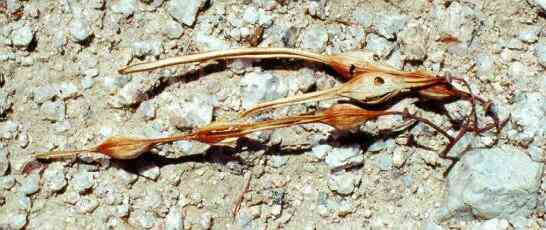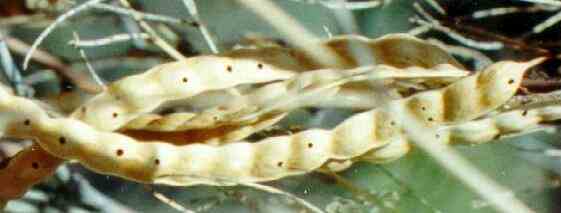|
Bruchids are small beetles, typically less than 1 cm long. There are over 1000 species of bruchids, many of which are of great agricultural importance because they seriously damage the seeds of leguminous crop plants such as cowpeas. Some of these bruchid species are host-specialised, and some are generalists. In all cases the adult beetles feed on the pollen and nectar of plants. They mate in the flowers, and lay their eggs on the developing pods. When the eggs hatch, the young larvae burrow into the pods and then into the developing seeds, which they use as a food source. After pupation in the seeds, the young adult beetles emerge through a small hole that they make in the pod, thereby completing the life cycle. The leguminous trees of deserts, such as mesquite and paloverde, act as hosts to several bruchids. The two images below show the obvious tell-tale signs of bruchid damage - the holes through which young adults have emerged. It is not uncommon to find a high proportion of damaged seeds - up to 75% in the case of mesquite. But this level of damage, which would be devastating in agriculture, seems to have little effect on desert trees - the plants produce enough seeds to ensure that some remain undamaged.
|

